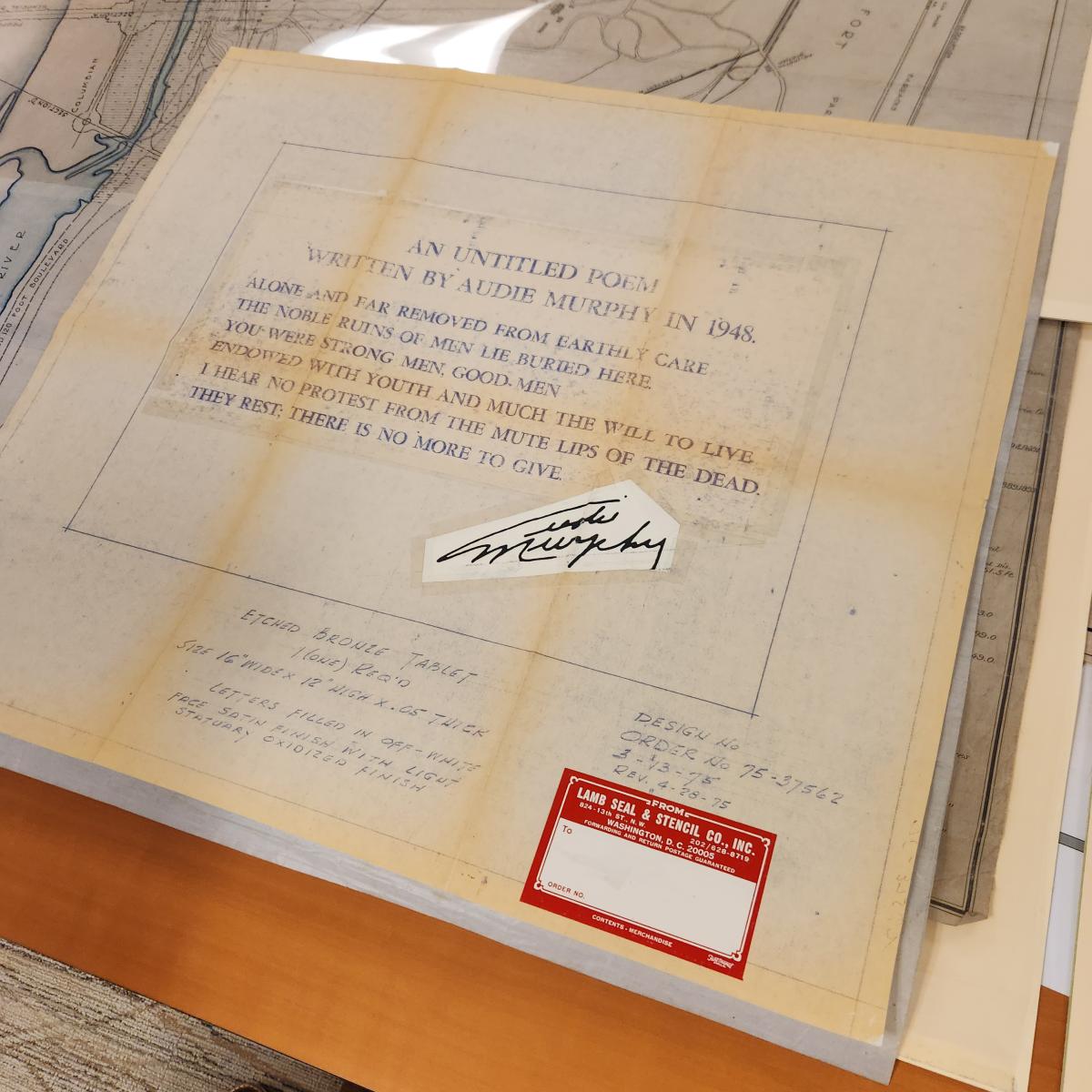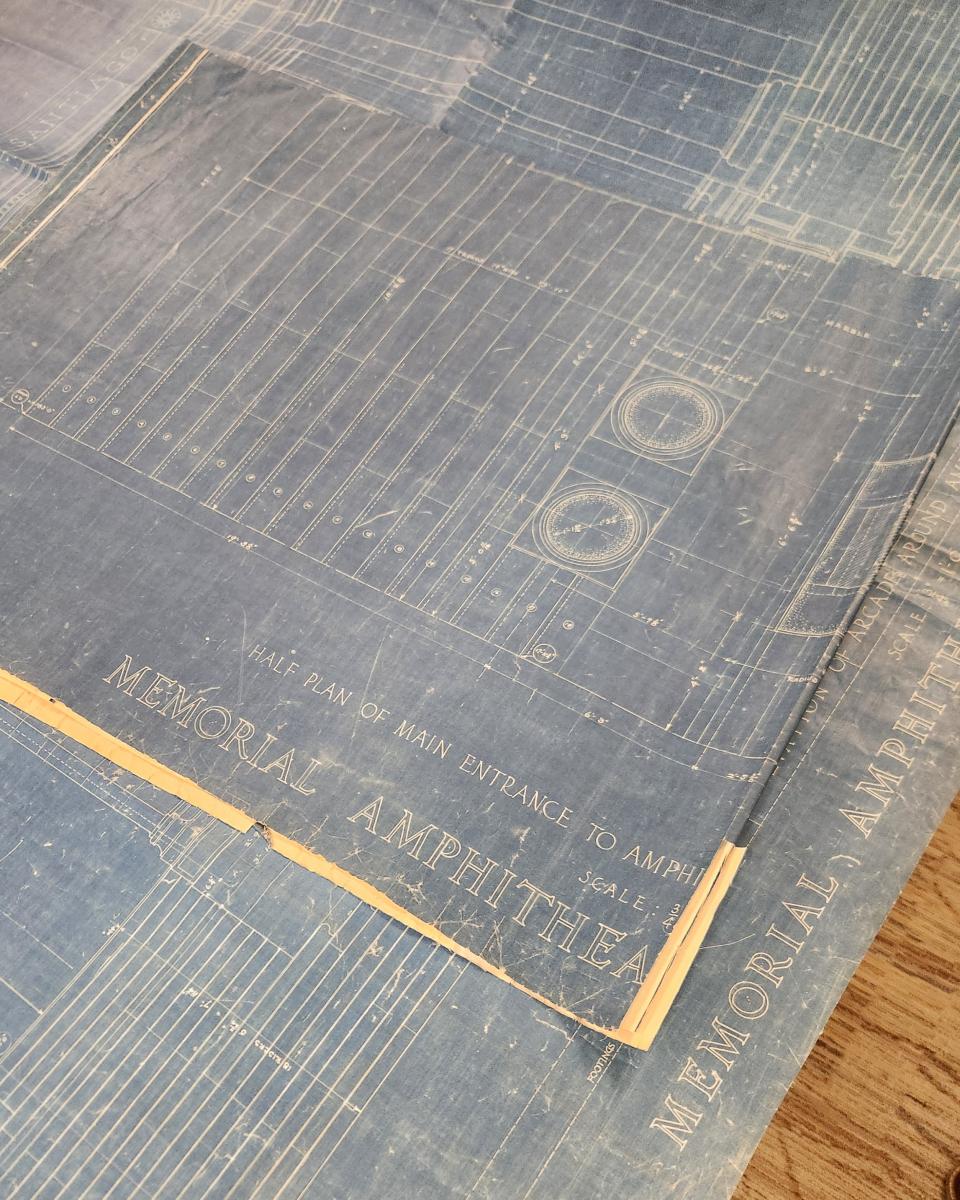
Historical Arlington Cemetery Records Arrive at National Archives
By Pete Lewis | National Archives News
WASHINGTON, February 5, 2025 – In December, the National Archives’ Permanent Records Capture Team and staff from the Cartographic Branch began receiving a collection of historical documents from Arlington National Cemetery (ANC). This collection consists of rare maps and architectural drawings from the 1830s to 1970s that were used to assist in determining land boundaries and roads, and constructing historic structures at ANC, as well as other documents of significance.
“Collections like this give new insight into the thought that went into the creation of ANC,” said Archives Specialist Tony Williams. “They also allow the public to engage with the cemetery’s rich history and honor those who served.”
There are several pieces of note within the collection, including:
- Audie Murphy's signed poems and burial information. As the most decorated American combat soldier of World War II, his legacy as a soldier, actor, and songwriter continues to serve as an inspiration.
- A map with Lorimer Rich's signature. Originally from Camden, NY, Rich is celebrated for designing the Tomb of the Unknown Soldier in the cemetery. A graduate of Syracuse University and a World War I veteran, he made a lasting impact on our nation’s history with his architectural achievements, including the Tomb of the Unknown Revolutionary War Soldiers in New York.
- Plans for the original James Tanner Amphitheater, designs of the Memorial Amphitheater created by The Fuller Company, and structural plans for the columbarium prototype for ANC.
“Maps used in the 18th and 19th centuries were handmade using paper and inks. Some of the maps we received were brittle and discolored, needing immediate remediation care,” Williams said. “Archives staff will provide the ideal conditions to continue preservation of the documents by storing them in a cool, dry place away from direct light and heat.”
ANC is rich in historical military records that are frequently referenced by researchers. These records were maintained by engineers, and various pieces were gathered from different areas within the cemetery.
This collection is considered to hold intrinsic value. Records with intrinsic value are classified as permanent records possessing characteristics that make their original form the only acceptable method for preservation.
“Only a small percentage of government records are appraised as having intrinsic value,” said Appraisal Supervisor Richard Green, who helped develop the guidelines for determining Intrinsic Value Records.
High research value transfers often involve coordinating with multiple offices.
“Appraising intrinsic value records requires collaborating with agencies to determine which records may have intrinsic value and thus be good candidates for accessioning to the National Archives to ensure public access well into the future,” Williams added. “We are in negotiations with the [cemetery] to receive more historical records. These collaborative efforts assist in agencies building trust in the National Archives, which sometimes leads to high-value transfers like this one.”
Once the records are processed by the Cartographic Branch staff, they will be available to view in the Cartographic Research Room at the National Archives in College Park, MD. These records will be digitized in the future, to provide online access.
“The Permanent Records Capture Team is dedicated to providing public access to high-value government records,” said Williams. “We ensure that records deemed to have intrinsic value are properly appraised, that disposition instructions are implemented, and that we assist agencies in secure record transfers. We support our mission in providing equitable public access to federal government records, and are expecting a second transfer of concept drawings and maps in the near future.”
For additional information regarding intrinsic value records, please contact the permanent records capture staff at permanentrecords@nara.gov.
Visit the National Archives online for more news, and visit the National Archives Catalog to browse more digitized records from Arlington National Cemetery.

